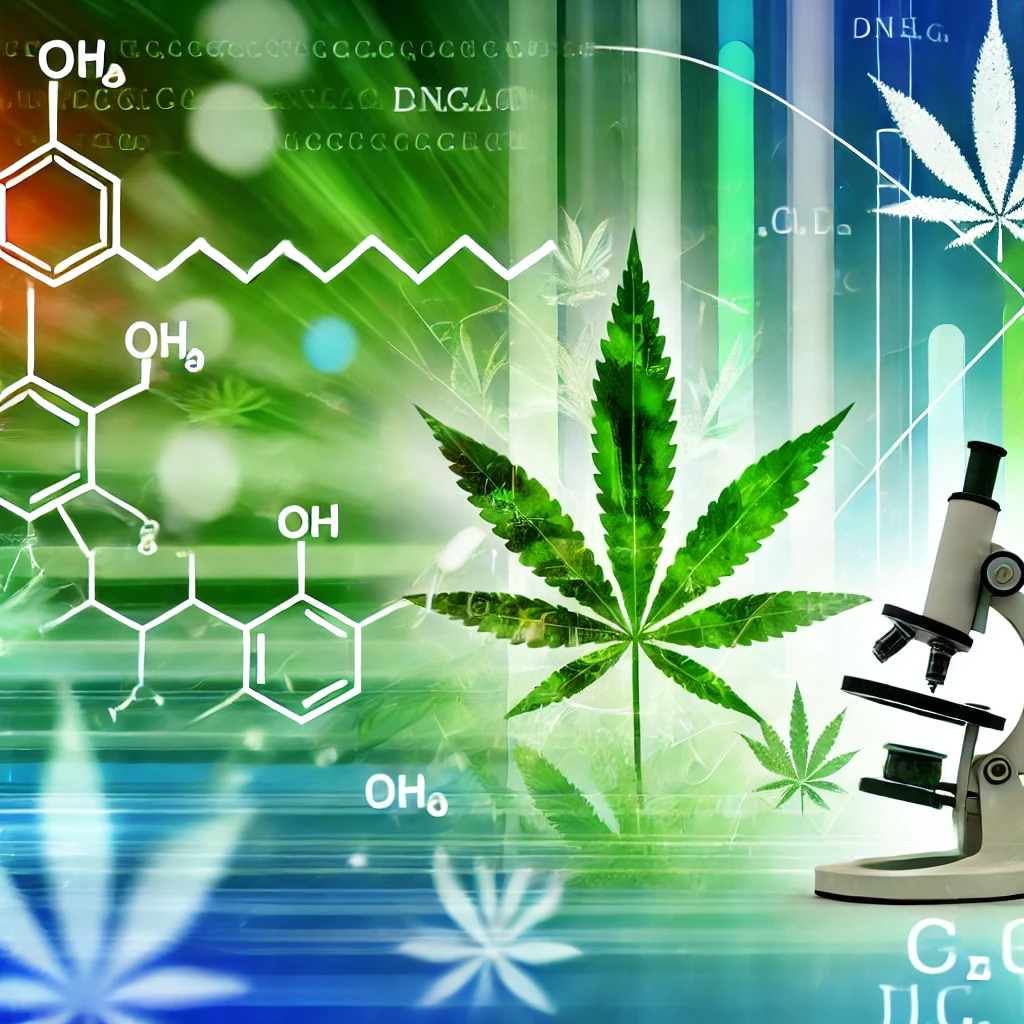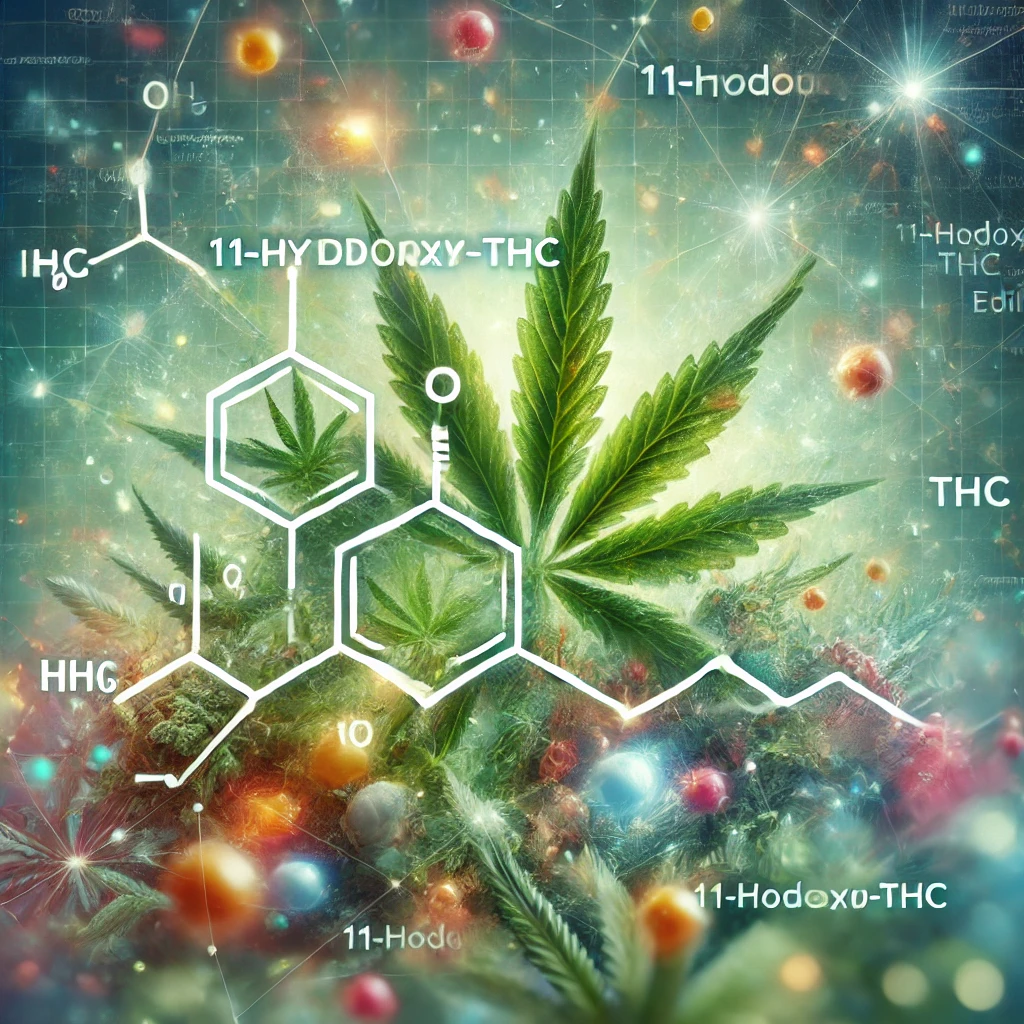New research reveals the equipotency of cannabis metabolites to THC, offering new perspectives on cannabis bioactivity and therapeutic potential.
Cannabis research is continuously uncovering fascinating insights into the interactions of various cannabinoids. One discovery that stands out is the role of 11-hydroxy-THC (11-OH-THC) and its equipotency relative to THC. As cannabis consumption—especially through edibles—becomes more widespread, understanding the cannabis metabolite’s potency is crucial for both consumers and healthcare professionals.
What is 11-Hydroxy-THC?
11-hydroxy-THC is a potent metabolite of THC, produced in the liver when delta-9-THC (the psychoactive component most commonly associated with cannabis) is ingested orally. When consuming cannabis edibles, THC undergoes metabolism in the liver, converting into 11-hydroxy-THC. This metabolite is significantly more potent and long-lasting than THC itself, which underscores its importance.
The Potency and Effects of 11-Hydroxy-THC
Research reveals that 11-hydroxy-THC can be up to five times more potent than THC. This increased potency is attributed to its higher affinity for the CB1 receptors in the brain, leading to more intense psychoactive effects. Additionally, the onset of effects from 11-hydroxy-THC is faster when administered intravenously, and it produces a stronger, longer-lasting high when consumed orally.
The distinct characteristics of 11-hydroxy-THC explain why edibles often seem more potent and have a prolonged effect compared to smoking or vaping cannabis. Inhaled THC bypasses the liver initially, resulting in lower levels of the metabolite. Conversely, the liver’s first-pass metabolism during oral consumption significantly increases the levels of said metabolite, contributing to the robust and enduring effects experienced and enjoyed by cannabis users.
Medical Implications and Therapeutic Benefits
The enhanced potency of 11-hydroxy-THC also translates into potential therapeutic benefits. Its strong affinity for cannabinoid receptors suggests it could be highly effective in managing conditions like chronic pain, nausea, and muscle spasticity. Some studies propose that the promising little cannabis metabolite just may offer better relief for these conditions compared to THC due to its higher potency and prolonged action.
However, the increased potency of 11-hydroxy-THC means it can also cause more pronounced side effects, such as anxiety, paranoia, and increased heart rate, especially in individuals sensitive to THC or with a low tolerance. Therefore, it is crucial for consumers to start with low doses and gradually increase to avoid adverse effects.
Practical Considerations for Consumers
For those new to edibles or 11-hydroxy-THC, the general advice is to “start low and go slow.” Begin with a small dose, typically 2-5 mg of THC, and wait at least two hours before considering an additional dose. This cautious approach helps mitigate the risk of overconsumption, which can lead to unpleasant experiences due to the delayed onset and extended duration of edibles.
The discovery of the equipotency of 11-hydroxy-THC relative to THC marks a significant advancement in our understanding of cannabis metabolism and its effects. As more consumers turn to edibles for their convenience and potency, awareness of 11-hydroxy-THC’s powerful effects becomes increasingly important. Whether for recreational enjoyment or therapeutic purposes, understanding how this metabolite works can help users make informed decisions and enhance their overall cannabis experience.
The Science Behind 11-Hydroxy-THC Metabolism
To fully appreciate the impact of 11-hydroxy-THC, it’s important to understand the metabolic process. When THC is consumed orally, it passes through the digestive system and is absorbed into the bloodstream via the stomach and intestines. From there, it travels to the liver, where it undergoes a process known as first-pass metabolism. During this process, enzymes in the liver convert THC into 11-hydroxy-THC. This metabolite is more hydrophilic, meaning it mixes more readily with water in the bloodstream, allowing it to cross the blood-brain barrier more effectively than THC.
Comparing Consumption Methods
The method of cannabis consumption plays a crucial role in the experience and effects of THC. Smoking or vaping cannabis delivers THC directly to the lungs, where it is rapidly absorbed into the bloodstream and transported to the brain. This bypasses the liver initially, resulting in a quicker onset of effects but with lower levels of 11-hydroxy-THC. On the other hand, edibles involve a slower absorption process, as the THC must pass through the digestive system and liver first. This delay can lead to a more prolonged and intense high due to the higher concentration of 11-hydroxy-THC produced.
Safety and Dosing Recommendations
Given the potency of 11-hydroxy-THC, proper dosing is critical, especially for new users. Overconsumption can lead to intense psychoactive effects that may be overwhelming and unpleasant. Consumers are advised to start with a low dose of edibles, usually between 2-5 mg of THC, and wait at least two hours before taking more. This approach helps avoid the common pitfall of ingesting too much too quickly, which can result in an uncomfortable and extended high.
The Future of Cannabis Research
As the cannabis industry continues to evolve, so too does our understanding of its various components and their effects. Ongoing research into cannabinoids like 11-hydroxy-THC is crucial for developing safer and more effective therapeutic applications. Scientists are exploring ways to harness the benefits of this potent metabolite while minimizing potential side effects, paving the way for innovative treatments for a range of medical conditions.

The rising popularity of cannabis edibles makes it imperative to understand the equipotency of 11-hydroxy-THC relative to THC. By recognizing the potency and effects of this metabolite, consumers and healthcare professionals can better navigate the evolving landscape of cannabis use. As research continues to unfold, staying informed about these developments will ensure a safer and more enjoyable experience for all users.
In summary, the equipotency of 11-hydroxy-THC relative to THC highlights the complexity of cannabis consumption and its impact on the body. By understanding this potent metabolite, consumers can optimize their cannabis experiences, making informed choices that cater to their specific needs and preferences.
***
GreenPharms is more than just a dispensary. We are a family-owned and operated company that cultivates, processes, and sells high-quality cannabis products in Arizona. Whether you are looking for medical or recreational marijuana, we have something for everyone. From flower, edibles, concentrates, and topicals, to accessories, apparel, and education, we offer a wide range of marijuana strains, products and services to suit your needs and preferences. Our friendly and knowledgeable staff are always ready to assist you and answer any questions you may have. Visit our dispensaries in Mesa and Flagstaff, or shop online and get your order delivered to your door. At GreenPharms, we are cultivating a different kind of care.






